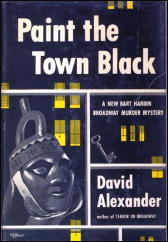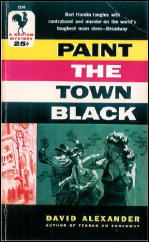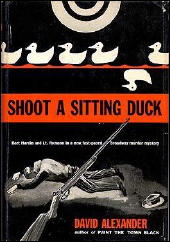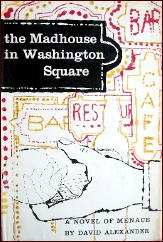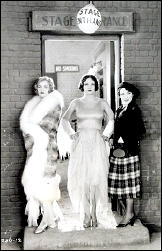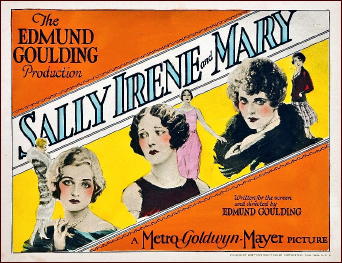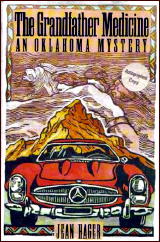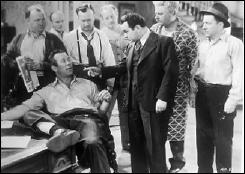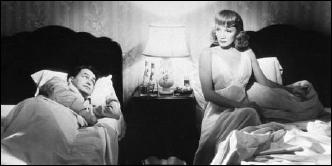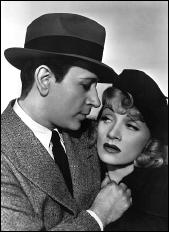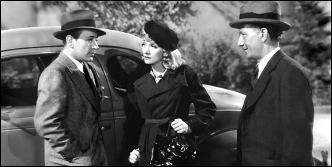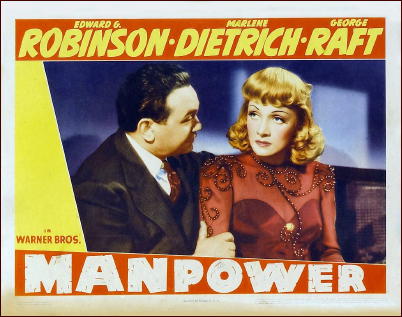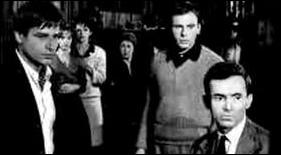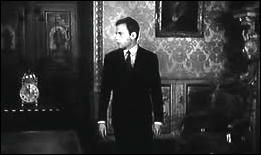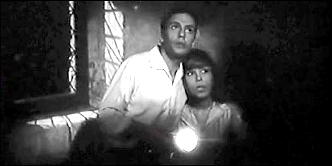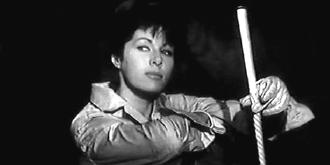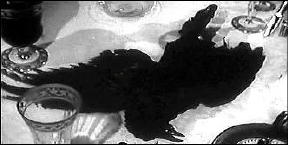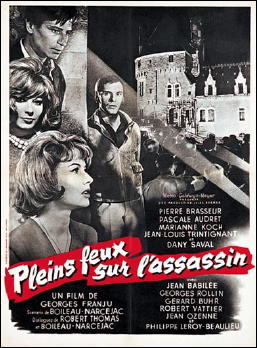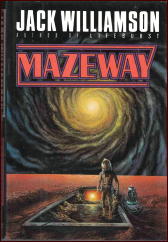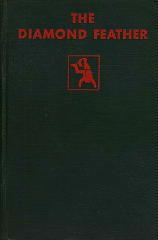Wed 25 Jan 2012
Archived Review: TIM MYERS – Room for Murder.
Posted by Steve under Bibliographies, Lists & Checklists , Characters , ReviewsNo Comments
TIM MYERS – Room for Murder. Berkley, paperback original, September 2003.
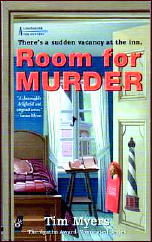
If you haven’t read any of the previous ones in the series — and this is the fourth so far — Alex Winston is an innkeeper, and he helps solve mysteries. What’s unusual about the inn is that it’s next to an exact replica of the Cape Hatteras Lighthouse, but snugly nestled in the scenic Blue Ridge Mountains, way over on the other end of the state.
North Carolina, that is. It’s a terrific location to set the stage for some fine detective work, but as fine as the camaraderie between Alex and the local townspeople is; as fascinating as the busted romances between Mor and Emma, and Alex and Elise, are; and watching them getting patched up again — or do they? — and as interesting as being shown the vicissitudes of running a modern-day hostelry establishment is, there’s not a heck of a lot of time left in not too many pages to solve a murder or two.
Emma’s ex is the first body to be found, followed by one of the two candidates for mayor of Elkton Falls, but the election must go on, and since it’s now a matter of husband running against wife (Tracy Shook vs. Connor Shook), the campaign is getting nastier and nastier, and that’s what’s on everyone’s mind.
Which is all well and good, but perhaps you know what I’m thinking, and you might be right. The solution to the murders boils down to (a) a slip of the tongue on the part of the guilty party, (b) a wild leap in logic on the part of Alex, and (c) an unconvincing change of character on the part of the party in part (a).
Nor is there anything fancy about Myers’ level of writing, pitched at, say, advanced middle school students. Which makes it sound terrible when it isn’t, but you shouldn’t read this book and expect to find much worth quoting to anyone sitting in the same room with you.
And the book is entertaining, don’t mistake me there either. It’s just that as a mystery, it has awfully weak legs.
The Alex Winston “Lighthouse Inn” series:
1. Innkeeping With Murder (2001) [Agatha Award nominee, Best First Novel]
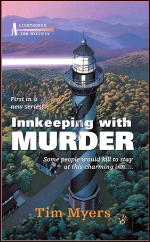
2. Reservations for Murder (2002)
3. Murder Checks Inn (2003)

4. Room For Murder (2003)
5. Booked for Murder (2004)
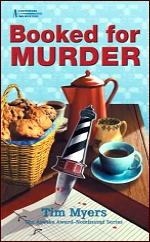
6. Key to Murder (2010)
7. Ring for Murder (2011)
